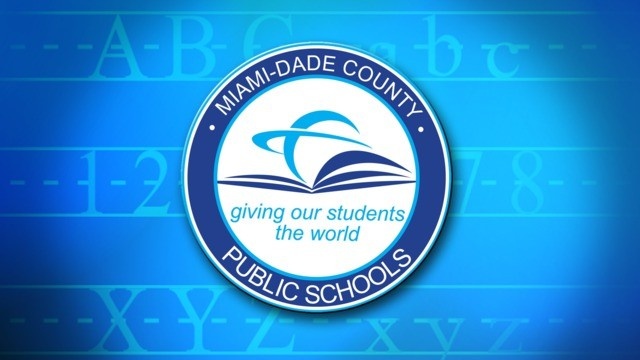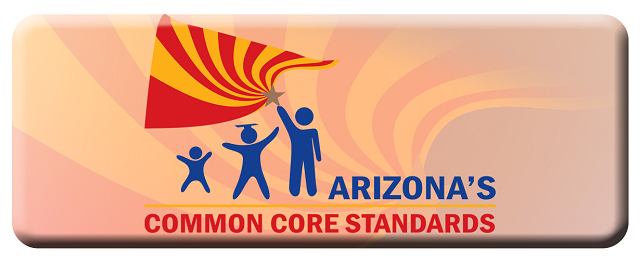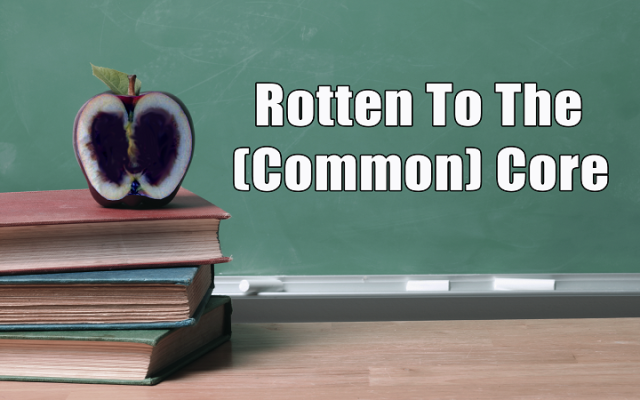A Funders’ Guide to the Common Core State Standards
In fall 2012, three philanthropic mega-organizations, Education Funder Strategy Group, Grantmakers for Education, and Growth Philanthropy Network, united to form the Common Core Funders Working Group (CCFWG).
The goal of this mega-mega philanthropic machine is to cement Common Core into American public education.
Here is a description of the purpose of CCFWG as noted in December 2013:
Recognizing the unique possibilities provided by Common Core standards, committed foundations are planning, learning, and acting together in a concerted way over the next two years as the “Common Core Funders Working Group.” A collaborative effort between the Education Funder Strategy Group, Growth Philanthropy Network and Grantmakers for Education, the Working Group seeks to leverage and organize the unique contributions of philanthropy——including resources, leadership, nimbleness, and independence——to support states and schools districts in successfully transitioning to the new Common Core standards.
The Working Group organizes funder interests and leadership on Common Core implementation issues at the national, state, and local levels. To learn more about getting involved——or simply to get added to the Working Group’s regular e-newsletter summarizing reports, research, and development with the standards——contact Grantmakers for Education.
In July 2015, CCFWG published a nine-page report summarizing what it “had learned” in its efforts over three years, from 2012 to 2015– as well as its decision to continue those efforts. Here are excerpts from the beginning of their July 2015 report, including their take on Common Core– and their assumption that they should promote it in schools that their own children are highly unlikely to attend– public schools:
The Common Core State Standards–finalized in 2009 and adopted by 46 states and D.C.—define a 21st century visionfor what young people need for success in college and careers in mathematics and English language arts. As such, their authors and many advocates believe the standards present an unprecedented opportunity to elevate the quality and effectiveness of teaching and learning in America’s schools—and to tackle persistent problems in new ways.
With their emphasis on problem-solving, critical thinking and writing, the Common Core standards can usher sweeping changes in schools, districts and states. And the transition to these higher expectations has shone a new light on many problems (such as allocation of resources towards ineffective professional development activities, and lack of scrutiny in the adoption of quality teaching materials) that have hampered effective teaching and world-class education in U.S. schools.Education funders interested in supporting the success of Common Core standards have therefore been pushed to consider solutions to deeper challenges and to consider more powerful ways of exerting influence and encouraging change. [Emphasis added.]
Two notes: First, these CC mega-funders considered Common Core “finalized in 2009,” when Common Core was not officially released until June 02, 2010. Second, they see their role as one of “exerting influence” in “powerful ways.”
And here are the concluding paragraphs of the July 2015 CCFWG report. Of course, the Common Core mega-funding push mustcontinue:
The challenges and needs posed by the Common Core standards remain. Funder support —for better teaching materials and better tests, for communications and advocacy, for teacher development—will still be critical and even decisive in the years ahead.
Working individually and jointly, philanthropy has influenced the adoption and implementation of the new standards. But the need for aggressive and well-organized advocacy and communications; the simultaneous potential and limitations of funder collaboration; the lessons about continuous improvement; and remaining questions about philanthropy’s role in systems change all remain pressing needs for continued support and future undertakings. [Emphasis added.]
CCFWG has plans to pay for “better tests”; it plans to continue to “advocate” for the Common Core “adoption” it has “influenced,” and its goal is to create “systems change”– with the “system” changing to “define the 21st century vision” for publicly educating the economic classes to which these rich folk do not belong.
In December 2013, Grantmakers for Education (GFE) and the Helmsley Trust produced this executive summary of three reports to help would-be Common Core funders. (Find more GFE reports here.) Here is their floral treatment of the glory of Common Core– “according to the project’s leaders”:
Announced in 2009 by the National Governors Association and Council of Chief State School Officers and voluntarily adopted by most states, the Common Core State Standards offer a new blueprint for what students in virtually every corner of the country will learn in English language arts (ELA) and literacy as well as mathematics. The Common Core are designed to be “robust and relevant to the real world, reflecting the knowledge and skills that young people need for success in college and careers,” according to the project’s leaders. States and local school systems are working overtime to implement and adjust to the higher expectations. Meanwhile, advocates and critics are engaged in spirited discourse over whether the standards can effectively drive improvement in K-12 education.
Note that the “spirited discourse” over the Common Core experiment follows the adoption– and still philanthropy is more than willing to push Common Core.
It must be just fine since “the project’s leaders” say so.
The opening of the executive summary is a more realistic in its portrayal of the 2009 “announcement” of Common Core (though by the time of the announcement, 46 states and three territories had already signed the Common Core memorandum of understanding).
Here are some noteworthy excerpts from the December 2013 funders executive summary:
…Funders should explore whether the Common Core affects their existing grantmaking strategies, and how they might use the standards as a rallying point to help accelerate pre-existing work and goals. …
Reflecting on grantmaking goals and objectives, funders should think about how to acknowledge the Common Core in their education investments. …
In addition to grantmaking, are there other leadership roles we can play to focus attention on the Common Core? …
But this excerpt is my favorite, by far:
The new standards have come under political and public attack in multiple states, and the opposition is expected to grow. Despite the states’ collaborative development and voluntary adoption of the standards, opponents on the right argue that the Common Core is a federal mandate. Opponents on the left are concerned about how the standards will affect teachers under new accountability systems, and about a perceived over-emphasis on testing. As a result, anti-Common Core campaigns are emerging in states across the country—some organic, but many highly coordinated and well-funded.
The Common Core—with its focus on raising expectations for how well students write, solve problems, and think critically—represents the culmination of reforms that many grantmakers have been trying to advance individually and in isolated efforts.Now, funders can use their resources and bully pulpit to help protect and advance the new standards. …
Funders can play a key role in helping build and maintain public will in support of the new standards. Some foundations have chosen to exercise their voice directly,publishing opinion pieces and convening key stakeholders to express support for the Common Core.Others have chosen to fund advocacy groups to support the work. Funders may also leverage their relationships with key stakeholder groups, such as the business community, which can provide powerful local voices in support of reform.
Advocacy shouldn’t stop with the new standards: Funders can play an essential role in helping state education policy leaders understand the value proposition of the new, common assessments most states will likely use. The reality is: Standards, no matter how good, aren’t very helpful if they aren’t well-measured. [Emphasis added.]
Common Core needs public support. So, let’s buy some.
We’ll call it “leveraging our relationships.” This is all the more important since Common Core opposition is “well organized and well funded.”
These are millionaires and billionaires soliciting Common Core pushes who are writing about supposed “well funded” Common Core opposition. Their solution? Manufactured support via the purchasing of pro-CC organizations, fabricating CC support meetings, and writing “I’m rich so my opinion is valuable” op-eds about an education initiative from which rich kids are exempt.
And Common Core needs common assessments; so, let’s “help” education policy leaders “understand” the need for the tests that must accompany Common Core. (The feds, who are supposedly not puppeting state involvement in Common Core, publicly agreed in 2009 to foot the bill for Common Core assessments. So, no need for philanthropy to directly pay for the assessments. However, indirect funding is always, uh, “helpful”….)
If it isn’t tested, it doesn’t count… for the lower- and middle-class kids. After all, that’s who the moneyed, CC-exempt are using their “bully pulpits” to advocate for–
–the Common Core guinea pigs.













 Continuing its national battle against the federal government’s attempted takeover of public education, the Thomas More Law Center, last week, filed a friend of the court brief in the Missouri Court of Appeals supporting a lower court decision that held the State’s participation and membership in the Smarter Balanced Assessment Consortium (“SBAC”) is illegal and SBAC itself is an “unlawful interstate compact … whose existence and operation violate[s] the Compact Clause of the U.S. Constitution.”
Continuing its national battle against the federal government’s attempted takeover of public education, the Thomas More Law Center, last week, filed a friend of the court brief in the Missouri Court of Appeals supporting a lower court decision that held the State’s participation and membership in the Smarter Balanced Assessment Consortium (“SBAC”) is illegal and SBAC itself is an “unlawful interstate compact … whose existence and operation violate[s] the Compact Clause of the U.S. Constitution.”






